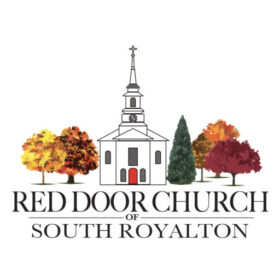Bob Thompson (D. Min.) is a good friend and trusted mentor of mine. I asked him if he would kindly pen a brief explanation about the mainline church which answered the oft asked question: “What is a mainline church?” Bob is pastor of Corinth Reformed Church (UCC) in Hickory, NC where he has ministered for over 20 years. His concise, yet insightful response is below: 1
What is a Mainline Church?
The term “mainline” originates from the “Main Line” of the Pennsylvania Railroad, and was used in that connection as early as 1841. Today “mainline” is most often used of Protestant churches with a historic, national, and pervasive impact on American identity. Mainline churches differ in many ways from one another, but they share a common timeline, similar internal struggle, parallel numerical growth and decline, an ecumenical connection, common corporate priorities, and a shared theological vocabulary.
The first mainline churches were the Presbyterian, Congregationalist, and Episcopal churches, which together made up 55% of America’s population in 1776. Their numbers dramatically declined in the 19th century as the upstart groups, primarily Baptists and Methodists, fueled by revivalism in the frontiers, changed the religious landscape. The self-identified and loosely-connected “Christian” churches threw off hierarchies and labels. A wave of German immigration in the 18th and 19th centuries also created mainline branches.
Churches today identified as mainline are primarily the following[1] –
- The United Church of Christ (UCC), which includes the streams of the Congregational churches, the O’Kelly Christians, and two German-American bodies
- The Episcopal Church USA, often garnering influence disproportionate to its declining numbers
- The Evangelical Lutheran Church in America (ELCA), historically Germans with a history of schism and reconciliation
- The Presbyterian Church (PCUSA), one of the original mainlines, also separating often and occasionally reuniting
- The United Methodist Church (UMC), another body that split when the country split and reunited its major factions decades later
- The American Baptist Church (ABC), the non-Bible belt Baptists
- The Disciples of Christ (DOC), a Christian connection body centered in Kentucky that birthed the Second Great Awakening
Three primary forces shaped mainline identity in the first part of the twentieth century: modernism, the social gospel, and ecumenism. They reached the height of their influence around the middle of the century, and declined in numbers and influence as their values blended into the culture and more conservative churches appealed to masses longing for spiritually-based answers.
No church today can lay claim to an ongoing and pervasive impact on American identity. In a splintered world of competing loyalties trumpeted by a plethora of broadcast, print, and online media, most Americans choose (or reject) their religious loyalty the same way they choose any other loyalties: comfort, convenience, and contribution to a sense of self-actualization.
Bob Thompson, Corinth Reformed Church, Hickory, NC
- After Bob penned this piece and I published it online, I found another, excellent piece on the mainline church at the Huffington Post Blogs by William G. Bradshaw titled Mainline Churches: Past, Present, Future. ↵
